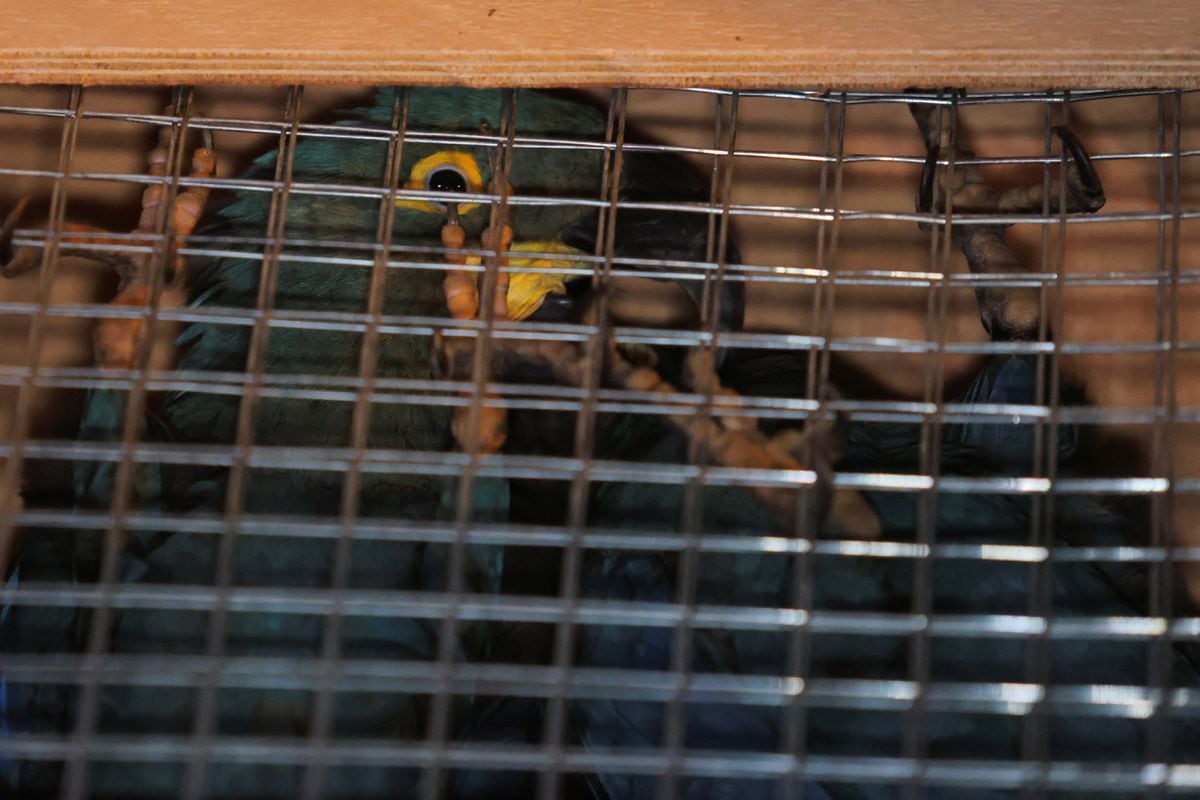Enlarge image
Heidelberg instead of Asia: ring-necked parakeets on a tree at the main train station
Photo: Uwe Anspach / dpa
Parrots are exotic colorful birds, mostly found where it is warm.
But the tropical animals also feel at home here: green and yellow parrots have found their way into many large cities in Germany.
Ring-necked parakeets (Alexandrinus manillensis) live in Düsseldorf, in the middle of the city.
A tree near the noble Königsallee serves as a place for the animals to sleep.
In Cologne on the Rhine promenade, the animals are admired by tourists - along the river to the south they have found optimal living conditions.
In Heidelberg, too, around 1,000 of the birds spend the night in trees near the main train station.
Biologists estimate that around 20,000 specimens live in the region.
The animals have bright green plumage, the males have a black collar.
In Germany, the animals have found a free ecological niche for themselves, says thank you
the biologist Michael Braun.
He examined the Heidelberg population.
"It's even warmer in the cities than in the surrounding area," he says.
The phenomenon is not limited to Germany, parrots are now also at home in other Central European countries and Southern Europe.
The Asiatic Ring-necked Parakeet is considered the most widespread parrot species in the world.
It has spread from its native India to Southeast Asia and South America.
Conservationist Bertram speaks of a new sparrow.
The origins of the German populations go back decades.
In the 1960s and 1970s there was a hype about parrots in Germany, and for many the animals were a hobby.
Specimens that escaped from captivity formed the basis for the individual stocks.
This was also the case in Stuttgart, where the only German group of Yellow-headed Amazons can be found.
"Back then, bird lovers collected to buy a mate for an escaped male," says Bianca Horn, long-time observer of the 60 parrots.
From the connection at that time, three young birds were born in 1986 and gave new impetus to a species that is almost extinct in its Central American homeland.
According to the Federal Government for the Environment and Nature Conservation, there are only 3,500 specimens left there.
Even minus degrees are no problem
Animals like the Ring-necked Parakeet that spread with the help of humans are called neozoans.
International freight traffic often plays a role in the spread.
Other well-known examples of such animals are brown rats, mosquitoes and coypu.
A total of at least 1100 non-native animal species occur in Germany, of which only around 260 species are established.
But how can parrots reside in places thousands of miles from their natural habitat?
The strong, crooked beak is the key to their survival, says expert Braun.
This means that the immigrants are not dependent on grains and can crack walnuts and hazelnuts like they would with pliers.
Berries and fruits are also on the menu for vegetarians, of which there are plenty even in winter thanks to exotic plants such as the trumpet tree.
Unlike Egyptian geese, the parrots do not spread widely, they stay true to one place.
Even in winter they do not fly to warmer climes.
The tropical birds can cope with low temperatures, albeit sometimes with frostbite on their claws.
Parrots are not an invasive species that displace native animals.
They only compete with jackdaws, woodpeckers and stock pigeons when looking for nesting holes in old trees.
Coexistence between humans and animals is not entirely free of conflict.
In 2003, parrots nested in the thermal insulation of a retirement home in Heidelberg.
Incubators solved the problem.
In Cologne, they wanted to appoint a deterrent officer to scare away the animals after residents of sleeping trees complained about the noise and droppings of the 3,000 Cologne birds.
A beer garden operator was particularly affected, whose awning was soiled by parrots every day.
The birds moved 50 meters further into trees in front of a hotel, whose guests are now enjoying the hustle and bustle.
In nearby Düsseldorf, there was even talk of driving the parakeets away from the promenade with falcons.
According to Bertram, looking for a common sleeping tree is a primal instinct of the animals that gives them security.
If they were driven away, they would split up into several small groups.
Splitting the roost means stress and anxiety for the parakeets.
His conclusion: »Then even more people would feel disturbed.«
dpa/joe



/cloudfront-eu-central-1.images.arcpublishing.com/prisa/2QNGIEEKTFGRXYFY7DZOTWJJAI.jpg)
/cloudfront-eu-central-1.images.arcpublishing.com/prisa/IZJDQQOGJJAMDDSSNIK4QJGIOE.jpg)




